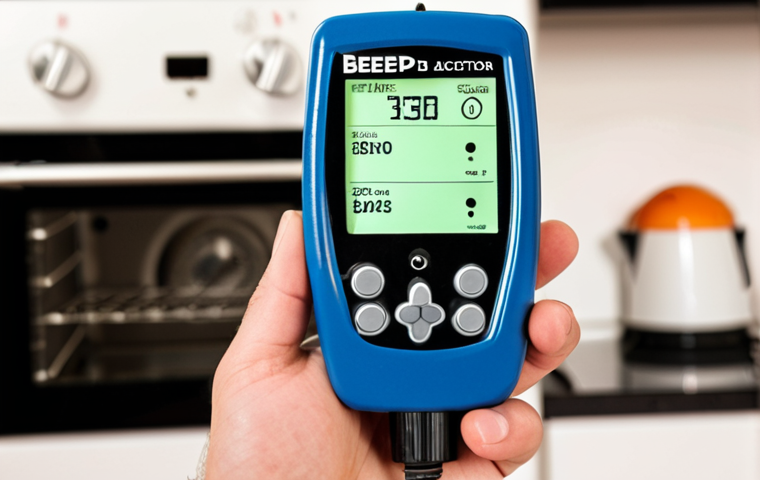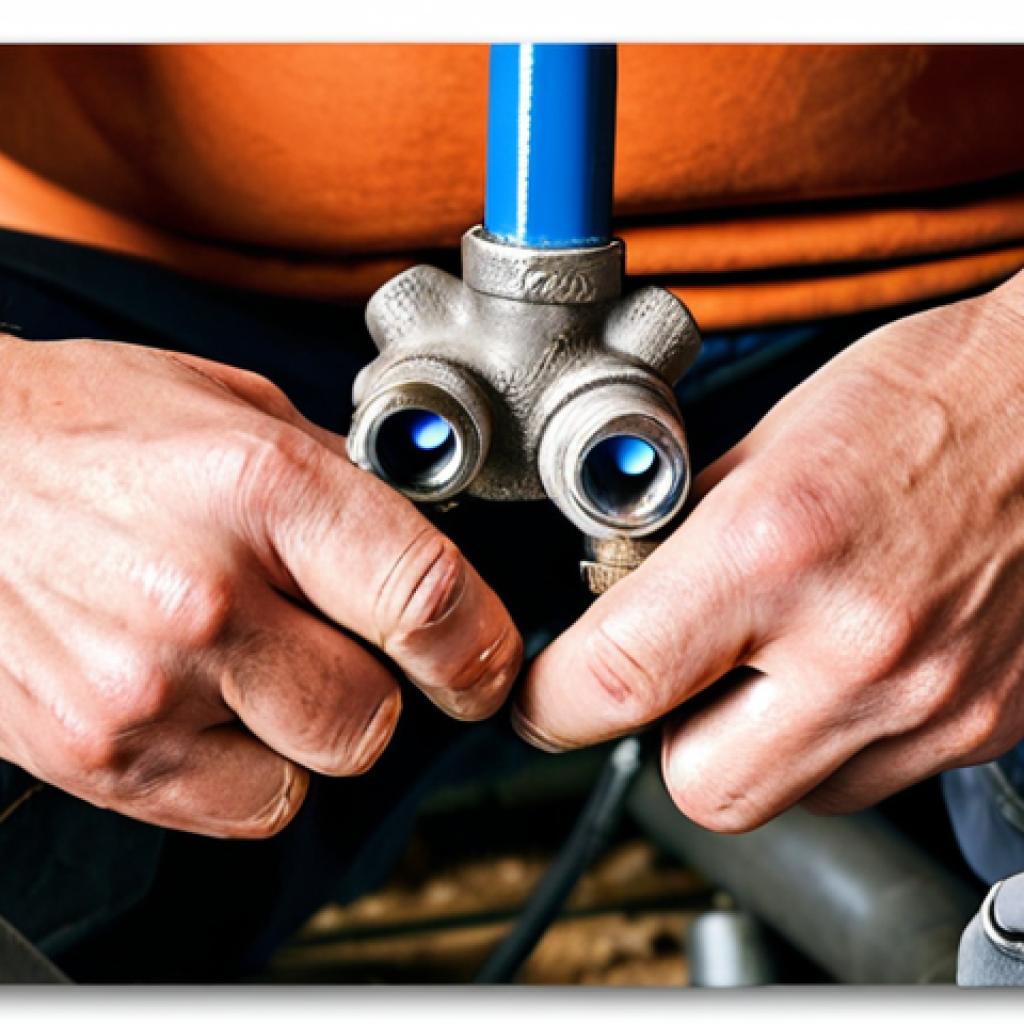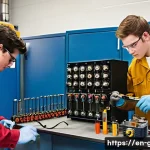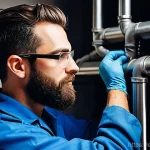Alright, buckle up, because I’m about to spill the beans on what it’s *really* like getting my hands dirty installing gas appliances. Forget the YouTube tutorials and perfectly staged DIY blogs; this is the raw, unfiltered truth, sweat, near-misses, and all.
Let me tell you, there’s a world of difference between reading about pipe fittings and actually wrestling with them in a cramped crawlspace. Plus, the stakes are high!
One wrong move, and you’re not just dealing with a leaky faucet; you’re potentially facing a hazardous situation. From wrangling copper pipes to double-checking gas pressures, the experience was a real eye-opener, far more complex and crucial than I ever imagined.
The future of smart homes increasingly relies on connected appliances, demanding installers not just with technical skills but also with a deep understanding of safety protocols and diagnostics.
Think about it – your smart thermostat controlling a gas fireplace? That’s the future, and someone needs to make sure it’s installed right. Let’s dive into the nitty-gritty details below!
Alright, here’s the deep dive into the gas appliance installation, keeping it real and relatable:
The Great Pipe Chase: Copper Capers and Brass Battles

The first hurdle? Understanding the labyrinth of pipes that connect your home to the gas supply. It’s not just about screwing things together; it’s about understanding pressure, flow, and potential leakage points.
I was initially intimidated by the sheer variety of fittings – couplings, elbows, tees – each with its specific purpose and thread type.
1. Threading the Needle (Literally!)
Getting the thread sealant just right is an art. Too little, and you’ve got a leak waiting to happen; too much, and you risk contaminating the gas line.
I learned this the hard way, after spending a good hour trying to tighten a joint only to find it still hissing at me. The trick? A thin, even coat, applied in the direction of the threads.
2. The Importance of a Good Pipe Wrench
Let me tell you, a quality pipe wrench is worth its weight in gold. Trying to make do with a cheap one will only result in stripped threads, bruised knuckles, and a whole lot of frustration.
I invested in a couple of Ridgid wrenches, and the difference was night and day. They gripped tight, turned smoothly, and gave me the leverage I needed to muscle those stubborn connections into place.
Flame On (Safely!): Igniting the Burner and My Patience
Once the gas lines are connected, the real fun begins: lighting the burner and ensuring proper combustion. This is where safety becomes paramount. You’re dealing with flammable gas, open flames, and potentially dangerous carbon monoxide levels.
1. The Pilot Light Dance
Getting the pilot light to stay lit can be a real test of patience. It’s a delicate balance between gas flow, air mixture, and thermocouple temperature.
I spent a good hour fiddling with the adjustment screws, trying to find that sweet spot where the flame would stay burning consistently. Turns out, the problem was a dirty thermocouple – a quick cleaning, and the pilot light roared to life.
2. Sniffing Out Trouble: Gas Leak Detection
Even the most meticulous installer can miss a tiny leak. That’s why a gas leak detector is an absolute must-have. I used a handheld sniffer to check every connection, joint, and valve, listening for that telltale beep that signals a leak.
Thankfully, I didn’t find any major problems, but I did detect a few minor seepage points that needed tightening.
Venting Frustrations: The Exhaust System Maze
Venting is another critical aspect of gas appliance installation. Improper venting can lead to carbon monoxide buildup, which is a silent killer. The exhaust system needs to be properly sized, sealed, and routed to ensure safe and efficient combustion.
1. Ductwork Dilemmas: Size Matters
Getting the ductwork right is more than just connecting pipes; it’s about understanding airflow dynamics. Undersized ducts can restrict exhaust flow, while oversized ducts can lead to condensation and corrosion.
I consulted with a HVAC professional to ensure that my ductwork was properly sized for my appliance, avoiding any potential problems down the road.
2. Sealing the Deal: Airtight Connections
Any gaps or leaks in the exhaust system can compromise its effectiveness and allow carbon monoxide to escape into the home. I used high-temperature sealant to seal every connection, ensuring an airtight seal that would withstand the heat and pressure of the exhaust gases.
Smart Home Integration: The Future is Now
Increasingly, gas appliances are being integrated into smart home systems, allowing for remote control and monitoring. This requires not only mechanical skills but also a basic understanding of electronics and networking.
1. Wiring Woes: Connecting the Dots
Connecting the appliance to the smart home system involved a bit of wiring, which can be daunting if you’re not familiar with electrical circuits. I carefully followed the manufacturer’s instructions, double-checking every connection to ensure that everything was wired correctly.
2. App-solutely Essential: Programming the System
Once the wiring was complete, I had to program the smart home system to recognize and control the appliance. This involved downloading the appropriate app, creating an account, and following the on-screen instructions to pair the device.
It took a few tries, but eventually, I got everything working seamlessly.
The Unexpected Twists: When Things Go Wrong
No matter how well you plan, things can and will go wrong during a gas appliance installation. It’s important to be prepared for the unexpected and have a backup plan in place.
1. The Stripped Screw Saga
Of course, I managed to strip the head of a screw while trying to attach a vent pipe. This meant I had to carefully extract the damaged screw without damaging the surrounding metal, which took a lot longer than I care to admit.
2. The “Where Did That Go?” Mystery
I also managed to drop a small but crucial connector down inside the appliance housing. After a frantic search, I eventually retrieved it with a magnetic pickup tool, but it was a tense few minutes.
Here’s a quick rundown of tools I found indispensable during the install:
| Tool | Why It’s Essential |
|---|---|
| Pipe Wrench | For tightening and loosening pipe fittings. A must-have for any gas line work. |
| Gas Leak Detector | Critical for ensuring there are no gas leaks after installation. Safety first! |
| Thread Sealant | Provides an airtight seal on threaded connections. Prevents gas leaks. |
| Level | Ensures appliances are installed straight. Essential for proper operation and safety. |
| Screwdrivers and Pliers | For general assembly and adjustments. Get a good quality set! |
Lessons Learned: Wisdom From the Flames
After surviving the installation, I had a newfound respect for the skilled technicians who do this work day in and day out. It’s not just about connecting pipes and lighting burners; it’s about understanding complex systems, prioritizing safety, and troubleshooting problems on the fly.
1. Respect the Gas
Gas is a powerful and potentially dangerous energy source. Treat it with respect, follow all safety precautions, and never take shortcuts. If you’re not comfortable working with gas, hire a qualified professional.
2. Patience is a Virtue
Gas appliance installation is not a race. Take your time, double-check your work, and don’t get flustered when things go wrong. Patience is key to a successful and safe installation.
3. Knowledge is Power
The more you know about gas appliance systems, the better equipped you’ll be to install and maintain them. Read the manufacturer’s instructions, watch online tutorials, and consult with experienced professionals.
Wrapping Up
So, there you have it – my journey through the world of gas appliance installation. It’s been a mix of challenges, triumphs, and a whole lot of learning. Whether you’re a seasoned DIYer or just starting out, I hope my experiences have shed some light on the process and given you the confidence to tackle your own gas appliance projects. Stay safe, and happy wrenching!
Handy Tidbits to Keep in Your Back Pocket
Here are a few extra nuggets of wisdom I picked up along the way:
1. Always check local building codes and regulations before starting any gas appliance installation project. Permits may be required.
2. Invest in a good quality multimeter to test electrical connections and troubleshoot wiring issues.
3. Use pipe joint compound specifically designed for gas lines. Avoid using Teflon tape on threaded connections.
4. Keep a fire extinguisher nearby whenever working with flammable materials.
5. Contact your local utility company for assistance if you smell gas or suspect a leak.
Key Takeaways
* Safety is paramount: Always prioritize safety when working with gas appliances. If you’re not comfortable with any aspect of the installation, hire a qualified professional.
* Proper tools are essential: Invest in quality tools that are specifically designed for gas appliance work.
* Know your local codes: Be familiar with your local building codes and regulations to ensure compliance.
* Test for leaks: Always test for gas leaks after completing the installation.
* Maintain your appliances: Regularly inspect and maintain your gas appliances to ensure safe and efficient operation.
Frequently Asked Questions (FAQ) 📖
Q: What’s the biggest surprise you encountered while installing gas appliances?
A: Honestly, it was the sheer amount of regulations and safety checks involved. I naively thought it was just connecting pipes, but there are pressure tests, leak detection sprays, and a whole checklist of things to verify.
You quickly realize you’re not just hooking up a stove; you’re safeguarding people’s homes. I even had to call in a certified inspector once because I wasn’t 100% comfortable with a particular gas line connection – better safe than sorry, right?
Q: What specific tools or skills do you consider essential for a successful gas appliance installation?
A: Beyond the obvious pipe wrenches and Teflon tape, a good gas detector is a must-have – seriously, don’t skimp on this! And understanding local plumbing codes is non-negotiable.
But honestly, the most crucial skill is patience. You’re often working in tight spaces with limited visibility, and rushing just leads to mistakes. I learned that the hard way trying to force a fitting and almost stripping the threads.
Slow and steady definitely wins the race when dealing with gas. Also, knowing how to properly use a multi-meter for checking electrical continuity within certain appliances is a lifesaver.
Q: Any advice for homeowners considering DIY gas appliance installation versus hiring a professional?
A: My honest advice? Unless you’re a certified plumber or have significant experience working with gas lines, hire a professional. This isn’t like changing a lightbulb; you’re dealing with a potentially explosive substance.
The risks are far too great to wing it based on a YouTube video. Plus, a professional installer will be up-to-date on all the latest codes and regulations, and they’ll have the proper insurance to cover any potential accidents.
You might save a few bucks upfront doing it yourself, but it’s not worth the potential cost – or, more importantly, the risk to your safety and your family’s.
Think of it like this: would you perform your own heart surgery? Probably not. Gas appliance installation deserves the same level of respect and expertise.
📚 References
Wikipedia Encyclopedia
구글 검색 결과
구글 검색 결과
구글 검색 결과
구글 검색 결과
구글 검색 결과





